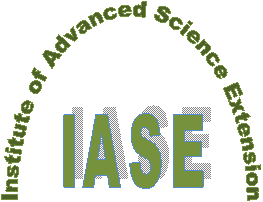International
ADVANCED AND APPLIED SCIENCES
EISSN: 2313-3724, Print ISSN: 2313-626X
Frequency: 12
![]()
Volume 12, Issue 10 (October 2025), Pages: 195-202
----------------------------------------------
Original Research Paper
Active learning management for enhancing 5th graders’ reading literacy: A confirmatory factor analysis approach
Author(s):
Affiliation(s):
1Department of Curriculum and Instruction, Faculty of Education, Mahasarakham University, Mahasarakham, Thailand
2Department of Education Measurement, Evaluation and Research, Faculty of Education, Phetchabun Rajabhat University, Phetchabun 67000, Thailand
Full text
* Corresponding Author.
 Corresponding author's ORCID profile: https://orcid.org/0000-0003-3628-5805
Corresponding author's ORCID profile: https://orcid.org/0000-0003-3628-5805
Digital Object Identifier (DOI)
https://doi.org/10.21833/ijaas.2025.10.020
Abstract
This study investigated the impact of active learning management on the reading literacy of Thai 5th-grade students and validated its key components through confirmatory factor analysis (CFA). Using a one-group experimental design, 37 students were purposively selected to participate in an intervention based on structured active learning principles and tailored lesson plans. The instruments included an active learning management plan and a reading literacy proficiency test. Data were analyzed using mean scores, percentages, standard deviations, effectiveness indices (E1/E2 and EI), paired sample t-tests, and CFA. The results indicated that active learning significantly improved students’ reading literacy during and after the intervention, as shown by the effectiveness indices and pre- and post-test comparisons. CFA confirmed the model of reading literacy, identifying evaluation and critique, reading for analysis, inference and summarization, and reading for comprehension as key contributing factors, with evaluation and critique being the most influential. These findings highlight the effectiveness of active learning management in enhancing reading literacy among Thai 5th-grade students.
© 2025 The Authors. Published by IASE.
This is an
Keywords
Active learning, Reading literacy, Grade 5 students, Learning management, Factor analysis
Article history
Received 5 February 2025, Received in revised form 2 July 2025, Accepted 3 October 2025
Acknowledgment
This research project was financially supported by Mahasarakham University.
Compliance with ethical standards
Ethical considerations
Written informed consent was obtained from the parents/guardians of all participating students, and assent was obtained from the students themselves. Participation was voluntary, and students could withdraw at any time without penalty. All data were kept confidential and used solely for research purposes.
Conflict of interest: The author(s) declared no potential conflicts of interest with respect to the research, authorship, and/or publication of this article.
Citation:
Makaew O, Intasena A, and Yotha N (2025). Active learning management for enhancing 5th graders’ reading literacy: A confirmatory factor analysis approach. International Journal of Advanced and Applied Sciences, 12(10): 195-202
Figures
Tables
Table 1 Table 2 Table 3 Table 4 Table 5
----------------------------------------------
References (17)
- Aji CA and Khan MJ (2019). The impact of active learning on students’ academic performance. Open Journal of Social Sciences, 7: 204-211. https://doi.org/10.4236/jss.2019.73017 [Google Scholar]
- Anggrarini N and Nurhadi K (2022). Adopting literature circle to guide work undergraduate students in extensive reading program: Lessons learned from initial teacher education. Journal of English Language and Language Teaching, 6(1): 40-49. https://doi.org/10.36597/jellt.v6i1.12036 [Google Scholar]
- Blaz D (2022). The world language teacher's guide to active learning: Strategies and activities for increasing student engagement. 3rd Edition, Routledge, New York, USA. https://doi.org/10.4324/9781003293262 [Google Scholar]
- Ceyhan S and Yıldız M (2021). The effect of interactive reading aloud on student reading comprehension, reading motivation and reading fluency. International Electronic Journal of Elementary Education, 13(4): 421-431. https://doi.org/10.26822/iejee.2021.201 [Google Scholar]
- Delgadova E (2015). Reading literacy as one of the most significant academic competencies for the university students. Procedia-Social and Behavioral Sciences, 178: 48-53. https://doi.org/10.1016/j.sbspro.2015.03.145 [Google Scholar]
- Dole JA, Duffy GG, Roehler LR, and Pearson PD (1991). Moving from the old to the new: Research on reading comprehension instruction. Review of educational research, 61(2): 239-264. https://doi.org/10.3102/00346543061002239 [Google Scholar]
- Dwigustini R and Widiya J (2020). Think pair share technique to promote students' reading comprehension. Jurnal Ilmu Pendidikan (JIP) STKIP Kusuma Negara, 12(1): 25-34. https://doi.org/10.37640/jip.v12i1.270 [Google Scholar]
- Fornari A and Poznanski A (2021). How-to guide for active learning. Springer, Cham, Switzerland. https://doi.org/10.1007/978-3-030-62916-8 [Google Scholar]
- Frankel KK, Becker BL, Rowe MW, and Pearson PD (2016). From “what is reading?” to what is literacy? Journal of Education, 196(3): 7-17. https://doi.org/10.1177/002205741619600303 [Google Scholar]
- Konopka CL, Adaime MB, and Mosele PH (2015). Active teaching and learning methodologies: Some considerations. Creative Education, 6(14): 1536-1545. https://doi.org/10.4236/ce.2015.614154 [Google Scholar]
- Lin LF (2017). Impacts of the problem-based learning pedagogy on English learners' reading comprehension, strategy use, and active learning attitudes. Journal of Education and Training Studies, 5(6): 109-125. https://doi.org/10.11114/jets.v5i6.2320 [Google Scholar]
- Liunokas Y (2019). The use of think, pair and share (TPS) strategy in teaching reading skill. IDEAS: Journal on English Language Teaching and Learning, Linguistics and Literature, 7(2): 61–71. https://doi.org/10.24256/ideas.v7i2.1020 [Google Scholar]
- Lovett HT (1977). Criterion-referenced reliability estimated by ANOVA. Educational and Psychological Measurement, 37(1): 21–29. https://doi.org/10.1177/001316447703700103 [Google Scholar]
- Nel C and Adam A (2014). The reading literacy profiles of first-year BEd foundation phase students. South African Journal of Childhood Education, 4(3): 52-70. https://doi.org/10.4102/sajce.v4i3.226 [Google Scholar]
- OECD (2019). PISA 2018 assessment and analytical framework. Organisation for Economic Co-operation and Development, Paris, France. https://doi.org/10.1787/b25efab8-en [Google Scholar]
- Ugwu EO (2019). Effect of student teams achievement division and think-pair-share on students' achievement in reading comprehension. African Journal of Teacher Education, 8: 218-237. https://doi.org/10.21083/ajote.v8i0.5209 [Google Scholar]
- Westerveld MF, Armstrong RM, and Barton GM (2020). Reading success in the primary years: An evidence-based interdisciplinary approach to guide assessment and Intervention. Springer, Singapore, Singapore. https://doi.org/10.1007/978-981-15-3492-8 [Google Scholar]

